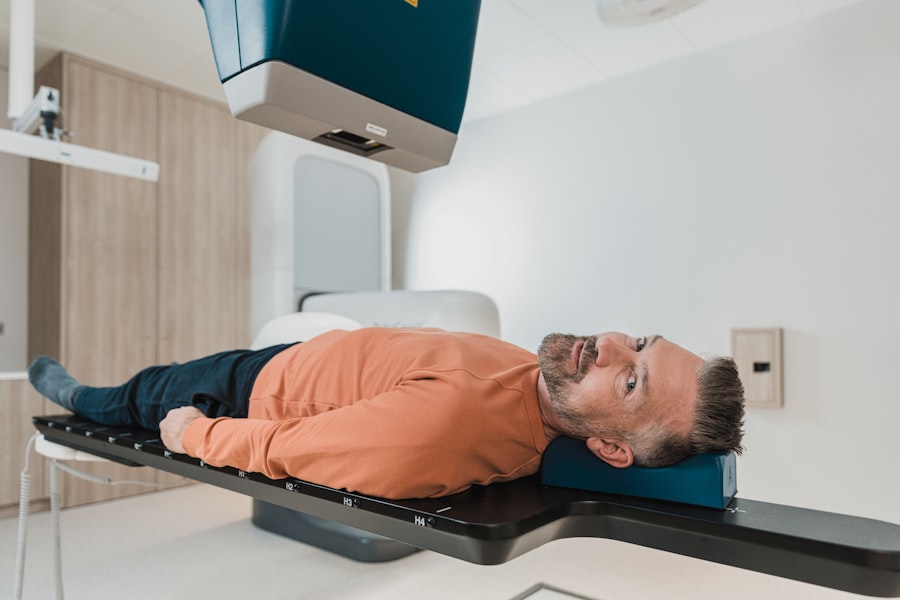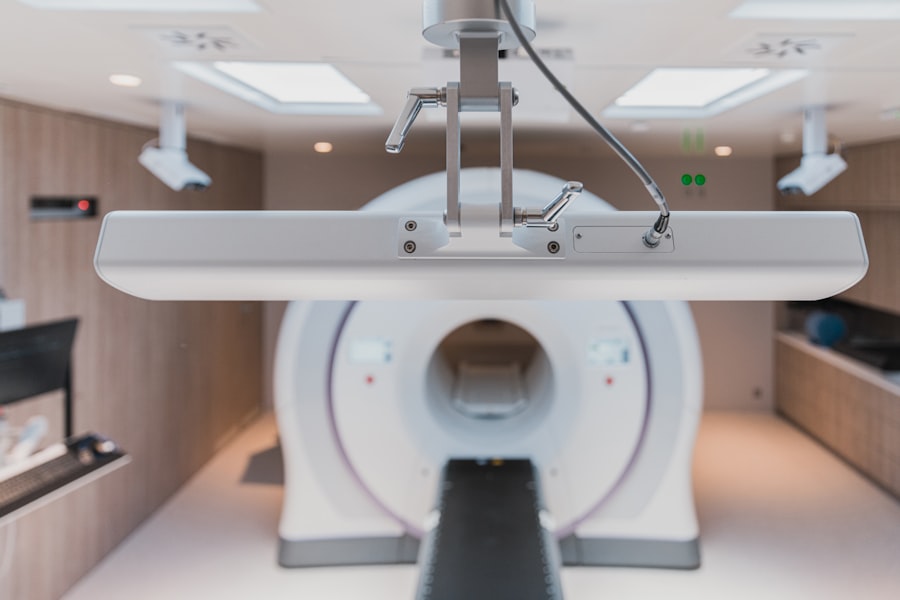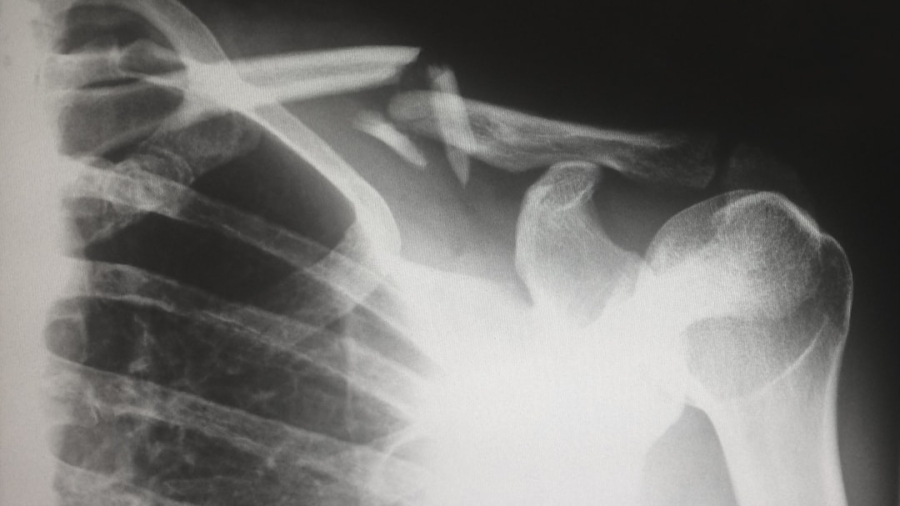The integration of artificial intelligence (AI) into medical diagnostics represents a transformative shift in the healthcare landscape. As technology continues to evolve at an unprecedented pace, the potential for AI to enhance diagnostic accuracy and efficiency is becoming increasingly apparent. AI systems, powered by machine learning algorithms and vast datasets, are capable of analyzing complex medical information far more rapidly than human practitioners.
This capability not only streamlines the diagnostic process but also opens new avenues for early detection and personalized treatment plans. The advent of AI in this field is not merely a technological advancement; it signifies a paradigm shift that could redefine how healthcare professionals approach patient care. Moreover, the application of AI in medical diagnostics is not limited to a single specialty or type of disease.
From radiology to pathology, and even in the realm of genomics, AI tools are being developed to assist clinicians in making informed decisions based on data-driven insights. The potential for AI to analyze imaging studies, interpret laboratory results, and even predict patient outcomes is vast. As healthcare systems grapple with increasing patient loads and the demand for high-quality care, AI emerges as a promising ally, capable of augmenting human expertise and addressing some of the most pressing challenges faced by modern medicine.
This article delves into the multifaceted role of AI in medical diagnostics, exploring its advantages, challenges, ethical considerations, and future prospects.
Key Takeaways
- AI in medical diagnostics has the potential to revolutionize the way diseases are detected and treated, leading to more accurate and timely diagnoses.
- The advantages of AI in medical diagnostics include improved accuracy, faster results, and the ability to analyze large amounts of data to identify patterns and trends.
- Challenges of implementing AI in medical diagnostics include the need for extensive training data, potential biases in algorithms, and the integration of AI systems with existing healthcare infrastructure.
- AI is improving accuracy in medical diagnostics by providing more precise and consistent analysis of medical images, identifying subtle patterns and anomalies that may be missed by human observers.
- The ethical and legal implications of AI in medical diagnostics include concerns about patient privacy, liability for diagnostic errors, and the potential for AI to exacerbate healthcare disparities.
- The future of AI in medical diagnostics holds promise for personalized medicine, early disease detection, and improved patient outcomes through more efficient and effective diagnostic processes.
- In conclusion, the potential impact of AI on medical diagnostics is significant, with the ability to improve accuracy, efficiency, and accessibility of healthcare services.
The Advantages of AI in Medical Diagnostics
Enhancing Diagnostic Precision
One of the most significant advantages of AI in medical diagnostics is its ability to process and analyze vast amounts of data with remarkable speed and accuracy. Traditional diagnostic methods often rely on the subjective interpretation of data by healthcare professionals, which can lead to variability in diagnoses and treatment plans. In contrast, AI algorithms can sift through thousands of medical images or laboratory results in a fraction of the time it would take a human, identifying patterns and anomalies that may go unnoticed.
Early Detection and Better Patient Outcomes
This capability not only enhances diagnostic precision but also reduces the likelihood of human error, ultimately leading to better patient outcomes. Additionally, AI can facilitate early detection of diseases, which is crucial for conditions such as cancer, where timely intervention can significantly improve prognosis. By employing advanced image recognition techniques, AI systems can detect subtle changes in imaging studies that may indicate the onset of disease long before symptoms manifest.
Towards Personalized Medicine
This proactive approach to diagnosis empowers healthcare providers to initiate treatment earlier, potentially saving lives and reducing the overall burden on healthcare systems. Furthermore, AI’s ability to analyze patient data from diverse sources—such as electronic health records, genetic information, and lifestyle factors—enables a more holistic understanding of individual patients, paving the way for personalized medicine tailored to each patient’s unique needs.
The Challenges of Implementing AI in Medical Diagnostics

Despite the promising advantages of AI in medical diagnostics, several challenges hinder its widespread implementation in clinical practice. One major obstacle is the need for high-quality, annotated datasets to train AI algorithms effectively. Medical data is often fragmented across various institutions and may lack standardization, making it difficult to compile comprehensive datasets necessary for training robust AI models.
Additionally, concerns about data privacy and security are paramount; patient information must be protected to comply with regulations such as HIPAA in the United States. The challenge lies in balancing the need for extensive data access with stringent privacy protections to ensure that patient confidentiality is maintained. Another significant challenge is the integration of AI tools into existing clinical workflows.
Healthcare professionals are already burdened with high workloads, and introducing new technologies requires careful consideration of how these tools will fit into their daily routines. Resistance to change is common in any field, and healthcare is no exception; clinicians may be hesitant to adopt AI solutions if they perceive them as a threat to their expertise or if they lack confidence in the technology’s reliability. To overcome these barriers, it is essential to foster collaboration between technologists and healthcare providers, ensuring that AI tools are user-friendly and designed with clinician input.
Only through such collaboration can we hope to achieve seamless integration that enhances rather than disrupts patient care.
How AI is Improving Accuracy in Medical Diagnostics
AI’s impact on improving accuracy in medical diagnostics cannot be overstated. By leveraging advanced algorithms that learn from vast datasets, AI systems can identify patterns that may elude even the most experienced clinicians. For instance, in radiology, AI has demonstrated remarkable proficiency in interpreting imaging studies such as X-rays, CT scans, and MRIs.
Studies have shown that AI algorithms can match or even surpass human radiologists in detecting conditions like pneumonia or tumors. This enhanced accuracy not only aids in timely diagnosis but also reduces the incidence of false positives and negatives, which can lead to unnecessary anxiety for patients or delayed treatment. Furthermore, AI’s ability to continuously learn from new data ensures that its diagnostic capabilities improve over time.
As more cases are analyzed and outcomes are tracked, AI systems refine their algorithms based on real-world results. This iterative learning process allows for ongoing enhancements in diagnostic accuracy and reliability. Additionally, AI can assist in identifying rare diseases that may not be within the immediate expertise of a clinician.
By cross-referencing symptoms with extensive medical databases, AI can suggest potential diagnoses that might otherwise be overlooked. This capability not only broadens the diagnostic toolkit available to healthcare providers but also empowers them to make more informed decisions based on comprehensive data analysis.
The Ethical and Legal Implications of AI in Medical Diagnostics
The rise of AI in medical diagnostics brings forth a host of ethical and legal implications that must be carefully navigated. One primary concern revolves around accountability: when an AI system makes a diagnostic error, who is responsible? Is it the healthcare provider who relied on the technology, the developers of the algorithm, or the institution that implemented it?
Establishing clear lines of accountability is crucial to ensure that patients receive appropriate recourse in cases of misdiagnosis or treatment errors linked to AI systems. Moreover, as AI becomes more integrated into clinical practice, there is a pressing need for regulatory frameworks that govern its use while ensuring patient safety. Another ethical consideration pertains to bias in AI algorithms.
If the data used to train these systems is not representative of diverse populations, there is a risk that the resulting algorithms may perpetuate existing disparities in healthcare outcomes. For instance, if an AI system is trained predominantly on data from one demographic group, it may perform poorly when applied to patients from different backgrounds. This raises questions about equity in healthcare access and outcomes; it is imperative that developers prioritize inclusivity when curating datasets for training purposes.
Addressing these ethical challenges requires ongoing dialogue among stakeholders—including technologists, healthcare providers, ethicists, and policymakers—to create guidelines that promote fairness and transparency in the deployment of AI technologies.
The Future of AI in Medical Diagnostics

Looking ahead, the future of AI in medical diagnostics appears promising yet complex. As technology continues to advance, we can expect even more sophisticated algorithms capable of integrating diverse data sources—from genomic information to wearable health devices—into cohesive diagnostic frameworks. This evolution will likely lead to more accurate predictions regarding disease risk and progression, enabling healthcare providers to tailor interventions based on individual patient profiles.
Furthermore, as telemedicine gains traction post-pandemic, AI could play a pivotal role in remote diagnostics, allowing patients to receive timely assessments without needing to visit healthcare facilities physically. However, realizing this potential will require addressing existing challenges head-on. Investment in research and development will be essential to refine AI technologies and ensure their reliability across various clinical settings.
Additionally, fostering interdisciplinary collaboration among technologists, clinicians, ethicists, and policymakers will be crucial for creating an ecosystem that supports responsible innovation while prioritizing patient welfare. As we navigate this evolving landscape, it is vital to remain vigilant about ethical considerations and strive for equitable access to these advanced diagnostic tools across all populations.
The Potential Impact of AI on Medical Diagnostics
In conclusion, the integration of artificial intelligence into medical diagnostics holds immense potential to revolutionize patient care by enhancing accuracy, efficiency, and personalization. While challenges remain—ranging from data privacy concerns to ethical implications—the benefits of leveraging AI technologies are undeniable. As we stand on the cusp of this new era in healthcare, it is essential for stakeholders across the spectrum to collaborate effectively and address these challenges proactively.
By doing so, we can harness the power of AI not only to improve diagnostic outcomes but also to create a more equitable healthcare system that serves all individuals effectively. The journey toward fully realizing the potential impact of AI on medical diagnostics will undoubtedly be complex and multifaceted. However, with continued advancements in technology and a commitment to ethical practices, we can envision a future where AI serves as an invaluable partner in healthcare—one that empowers clinicians with enhanced tools for diagnosis while ultimately improving patient outcomes across diverse populations.
As we embrace this transformative shift, it is crucial to remain focused on our shared goal: delivering high-quality care that prioritizes patient safety and well-being above all else.
For those interested in the intersection of technology and healthcare, particularly in how AI is revolutionizing medical diagnostics, it’s also beneficial to explore how technology is shaping other industries. A related topic of interest might be the advancements in software tools that enhance professional presentations. Understanding these tools can provide insights into how technology like AI is integrated into various software solutions to improve efficiency and effectiveness in professional settings. You can read more about the latest software for presentations in 2023 by visiting this article: Best Software for Presentation in 2023. This can provide a broader perspective on the pervasive role of technology across different sectors.
FAQs
What is AI in medical diagnostics?
AI in medical diagnostics refers to the use of artificial intelligence technologies, such as machine learning and deep learning, to analyze medical data and assist healthcare professionals in making accurate diagnoses and treatment decisions.
How does AI contribute to medical diagnostics?
AI contributes to medical diagnostics by analyzing large volumes of medical data, including images, genetic information, and patient records, to identify patterns and make predictions about disease diagnosis, prognosis, and treatment outcomes.
What are the benefits of using AI in medical diagnostics?
The benefits of using AI in medical diagnostics include improved accuracy and efficiency in diagnosing diseases, early detection of medical conditions, personalized treatment recommendations, and the potential to reduce healthcare costs.
What are some examples of AI applications in medical diagnostics?
Examples of AI applications in medical diagnostics include image recognition software for interpreting medical images such as X-rays and MRIs, predictive analytics for identifying patients at risk of developing certain diseases, and natural language processing for extracting information from medical records.
What are the challenges of implementing AI in medical diagnostics?
Challenges of implementing AI in medical diagnostics include ensuring the privacy and security of patient data, integrating AI technologies into existing healthcare systems, and addressing concerns about the potential for bias in AI algorithms.

